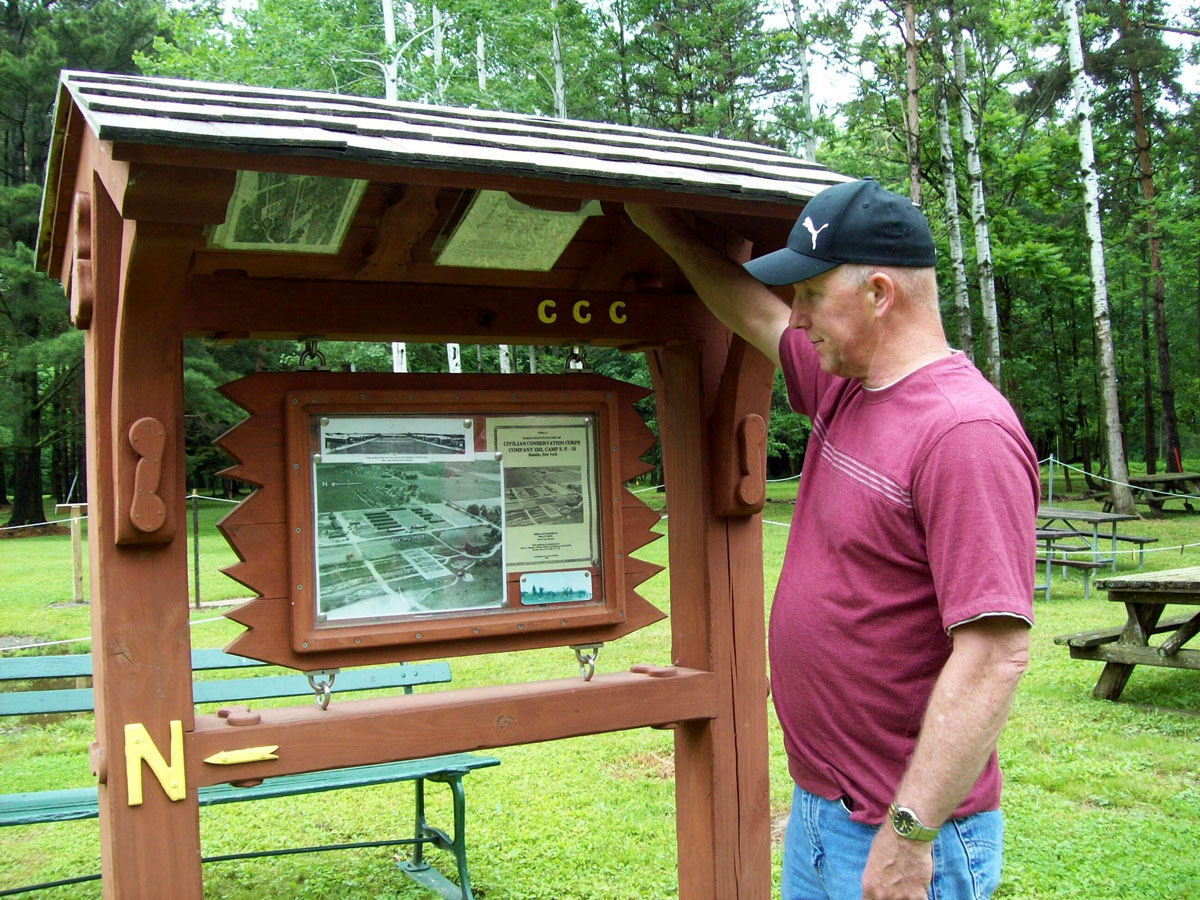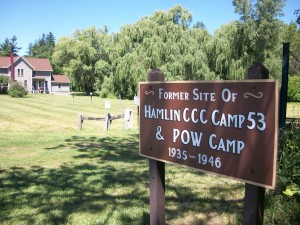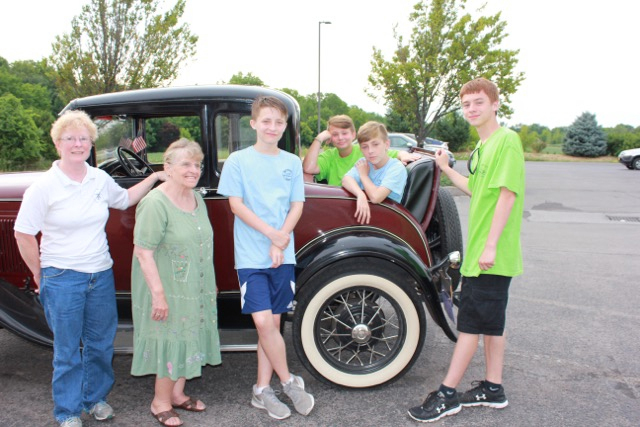History trail through Hamlin CCC/POW Camp now open

It’s now official: The trail at the former Civilian Conservation Corps/WWII POW Camp on Moscow Road in Hamlin is now a history trail, complete with a “Give Yourself A Tour Around the Hamlin CCC/POW Camp” booklets available at the kiosk on the west side of the site.
The first person to try the new tour was former Hamlin State Park manager Marty Howden, who visited the site June 25.
“Marty was very impressed,” says Ed Evans of Hamlin, who has worked with other members of the Friends of Hamlin Beach State Park over the past six years to clear the site, just east of the Moscow Road entrance of the park, to create the trail.
Evans says it was Howden who took an interest on the site, which is part of park property, and encouraged clearing and development of a history trail.
“Do you think we could turn this into a history trail?” Evans says Howden asked him back in 2008, when the site resembled a jungle with many trees and brush covering the former camp. Howden asked Evans for help in the project. “I almost fell off my chair,” Evans says, and got to work the next day clearing brush.
The CCC camp was opened in 1935 and housed young men who worked for one dollar/day during the Great Depression to build Hamlin Beach State Park. German WWII POWs were housed at the camp from 1944-1946 and worked on area farms and in canning factories for 85 cents/day. All buildings were removed from the site sometime after the closing of the POW camp, although many artifacts remain and are highlighted on the tour.

Evans explains the Friends of Hamlin Beach State Park grew out of the history trail project. During the most recent “I Love My Park Day,” twenty-nine 4×4 numbered posts were placed at various locations around the site.
Eventually the posts will have a weather-proof photo holder on top and visitors may be able to use their smart phone to access information.
Currently, the hard copy booklet can be used.
The posts have been placed, “so you don’t have to struggle to find them, Evans says. “You can come out and absorb all the history and take as much time as you want.”
The text of the tour is very detailed, describing not only locations of former camp buildings, but also fences, streets, guard towers and even barbed wire. Artifacts left in place are also described and even rocks and stones which served various purposes are explained.
Recently, an elderly woman who had been an employee of Duffy Mott visited the camp, Evans said. “She remembered the German prisoners singing during lunch breaks, in harmony,” he said.
The Hamlin History Trail was recently featured in a State Park electronic newsletter, and information – including the tour text – is also available online at the New York State Parks, Recreation and Historic Preservation website, Evans says.
Work continues on the camp, he notes, “We’re finding new artifacts all the time.” Visitors also continue to be a source of information and historical photos.
Evans says the Friends of Hamlin Beach State Park will soon be using the former farmhouse adjacent to the camp for a museum, meeting rooms and a research center. He says the State Parks Historic Preservation Division will come to assist in cataloging materials and artifacts.




